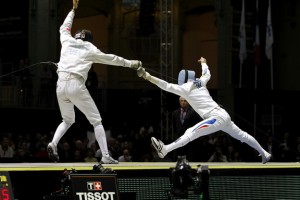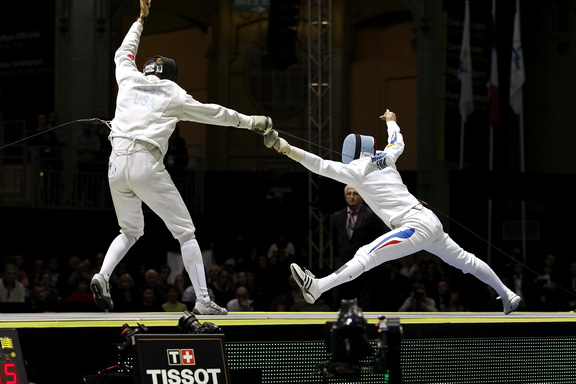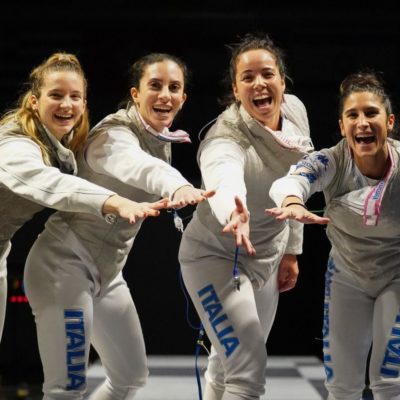
Here’s something rare – instead of a forum thread starting serious and descending into nitpicking (as often does happen in online conversations), we had a thread that started as a delayed April Fool joke/rant calling for banning the French grip in epee.
User Gladius saw fit to inject some reason and education into the thread, so I’m taking that post and using it here, otherwise the good stuff in it will get lost. So, please welcome this guest post by “Gladius” and his translation of Italy’s Maestro Giancarlo Toran.
On using the “French grip”:
One should “educate” the hand to use a weapon with a smooth grip which people insist calling “French grip.” And the proper way to train the hand should be–as taught by Maestro Giuseppe Mangiarotti–with the thumb almost touching the inside of the bell guard. This gives you more strength. But if this were the only way to hold the weapon all the time one could not understand the advantage of using the “French grip.”
The advantage this grip offers is because one can and should use it by holding the grip in a variety of possible ways.
- Power grip: thumb close to the bell guard, allows to do all that one can do with the orthopedic grip but a little less well, because the orthopedic grip is stronger.
- Intermediate grip: the index finger stretched forward almost touching the bell guard.
- Pommeling: taking even more advantage of the greater length at the cost of losing all power to work on the opponent’s blade.
Because of this variety one tends to rely less on blade work and emphasize more actions based on tempo and distance (misura). All fencing actions require tempo and distance but when one does not have the feedback of the opponent’s blade on which to construct his action, one must develop more actions based on tempo and distance.
These differences are important in the choice of actions. Therefore,
- a fencer using the ortho grip (pistol grip) will tend to rely on beats (battute), countertimes (controtempi), time thrusts (contrazioni), parries (parate) much more than a fencer using the smooth grip;
- a fencer using a “French” grip will work more on stop hits (arresti), (svincoli), remises (rimesse), leg and foot touches, and in general touches to the advanced targets (wrist, forearm, front leg, mask).
Nobody prevents a fencer with an ortho grip to do these same things but the weapon leads the fencer to favor certain choices which in practice become soon more effective. The Maestro, noticing the predisposition of the pupil, can direct him towards one or the other grip, or develop other actions which are more congenial to him as a person, and the type of grip he uses/prefers.
The antagonist from our thread included the following statements:
Maestro Toran responds: I don’t know Kelsey and I don’t have recent statistics. But I saw in action many excellent epeeists which used the French grip with great effectiveness. Bellone, Mazzoni, Milanoli, not to mention the French. True, one needs time to teach this grip well and properly.
Keep in mind also that while the weapon is always the same, not so the hand that holds it. By this I mean that a tall person with a strong arm and hand can use the “French” with all the advantages offered by this grip, and without the disadvantages, because with his strong hand he can overcome the extra strain without a problem.
The idea to prohibit the smooth grip seems to me rather weird and with no chance, beside being a bad idea per se, like everything which tends to limit variety. If the ortho were so far superior, the smooth grip would disappear on its own, through natural selection, just like happened with foil where the ortho indeed presents only advantages.
And there you have it. Some reasoned discussion on why some epee fencers would prefer to use a “smooth” or French grip.






